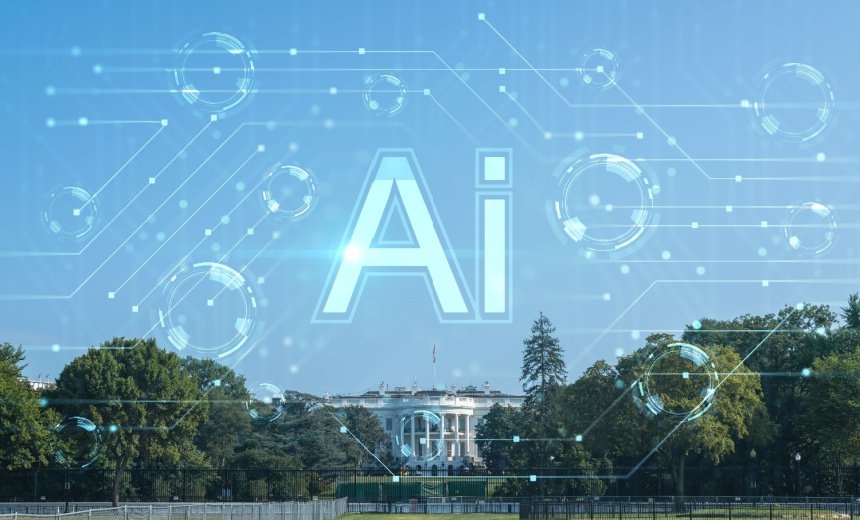Education
What Trump’s education cuts mean for literacy

This podcast, Sold a Story, was produced by APM Reports and reprinted with permission.
There’s an idea about how children learn to read that’s held sway in schools for more than a generation – even though it was proven wrong by cognitive scientists decades ago. Teaching methods based on this idea can make it harder for children to learn how to read. In this new American Public Media podcast, host Emily Hanford investigates the influential authors who promote this idea and the company that sells their work. It’s an exposé of how educators came to believe in something that isn’t true and are now reckoning with the consequences – children harmed, money wasted, an education system upended.
Episode 14: The Cuts
Education research is at a turning point in the United States. The Trump administration is slashing government funding for science and dismantling the Department of Education. We look at what the cuts mean for the science of reading — and the effort to get that science into schools.
This podcast, Sold a Story, was produced by APM Reports and reprinted with permission.
Education
Trump Continues Push for AI in Schools as FTC Probes Risks

White House Kick Off School Year With AI Education Efforts, Public-Private Collabs
The White House is rolling out its Presidential Artificial Intelligence Challenge with new commitments to further expand the use of AI in education just as the school year begins – and as the Federal Trade Commission readies a probe into whether popular AI chatbots are harming children’s mental health.
See Also: OnDemand | Transform API Security with Unmatched Discovery and Defense
U.S. President Donald Trump hosted several big tech leaders Thursday night “for discussions centered on harnessing [AI] to propel the U.S. to the forefront of global innovation,” according to a press release the White House published Friday. The meeting followed the second White House Task Force on AI Education summit, where First Lady Melania Trump announced a series of commitments to help further the administration’s AI challenge, including forthcoming toolkits, webinars, classroom guides and agency action items to increase the implementation of AI training materials and tools in K-12 schools nationwide.
Education Secretary Linda McMahon said during the meeting the agency is “fully aligned with the Presidential AI Challenge” and “encouraging students and educators to explore AI technologies with curiosity and with creativity.” Experts have also warned the federal push to rapidly deploy AI tools across American classrooms could come with cybersecurity vulnerabilities, privacy risks and potential harm to minors (see: Trump Wants AI in Classrooms. Where Are the Safeguards?).
Initiatives to further AI in education include billion-dollar commitments from companies like Alphabet and million-dollar agreements with IBM – both of which had their CEOs at the education summit. Labor Secretary Lori Chavez-DeRemer said that her agency is in the process of building new private sector partnerships to expand access to AI education and training materials nationwide. Google CEO Sundar Pichai said efforts are designed “in the service of helping the next generation to solve problems, fuel innovation and build an incredible future.”
Recent studies have shown AI tools and systems may have some positive benefits when introduced in the classroom but in their present form typically introduce major risks including the presence of inappropriate and harmful content. According to the Wall Street Journal, the FTC is preparing to send many of the top tech companies developing the leading AI tools that were present at the White House this week letters demanding information while investigating whether children’s mental health is impacted by the use of chatbots like OpenAI’s ChatGPT.
The White House Presidential AI Challenge invites U.S. students to complete a project that involves AI tools or systems to address community challenges, and encourages educators to use creative approaches to teaching and using AI technologies in K-12 education. Trump signed executive orders in April encouraging public-privte partnerships to expand AI in K-12 education, establishing the Presidential AI challenge and directing agencies to work with leading AI organizations in creating new resources specifically for K-12 education.
OpenAI has announced plans to create accounts for teens with parental controls amid lawsuits against AI companies over teenage suicides from families alleging their children were adversely affected by their tools.
Education
Schools should keep AI in its proper place

From the Fraser Institute
At the dawn of a new schoolyear, the issue of artificial intelligence (AI) looms large. But innovations have always been a part of classroom instruction.
For example, calculators changed the face of math class forever. Kind of.
Before the invention of calculators, all math equations were done manually. Calculators changed things by making it possible to solve complex equations in seconds and often without thinking much about the problem. All you had to do was punch in the correct numbers and—presto—the answer magically popped up on the screen.
Naturally, this led to some debate among teachers. Some thought there was no longer a need for students to memorize math facts including multiplication tables, while others argued that learning basic skills was still important, regardless of whether calculators were available or not.
With the benefit of several decades of hindsight, the evidence is clear that students still should learn basic math facts. While calculators make it possible to solve equations quickly, students who don’t know, by memory, the order of operations, or basic math facts such as multiplication tables, struggle to solve complex equations.
That’s because people have only a limited amount of working memory available at any given time. By committing basic math facts to their long-term memories, students can free up space in their working memories to tackle challenging math questions. In short, it would be a huge mistake to allow students to get away with not mastering important math skills.
Fast-forward to the present challenge of AI. Just as calculators made it easier to solve math equations, AI programs such as ChatGPT can perform research, correct grammar, and even write essays for students in a matter of seconds.
This leads to an obvious question: What should schools do about students using AI? Some schools have tried to ban AI entirely while others embrace it as a regular tool just like a pencil or a pen. Simply put, AI creates even more ethical questions and instructional challenges for teachers than calculators ever did when they were first introduced in classrooms.
Rather than bury our collective heads in the sand, we should tackle the problem of AI head on.
One of the most important things we can do is identify which activities are immune to AI’s influence. Frankly, this is why in-person tests and exams are more important than ever. If tests are written with pen and paper under a teacher’s supervision, students will not be able to use AI to formulate answers. Thus, rather than abolish tests and exams, with the advent of AI programs, we must embrace formal tests and exams even more than before. And we must use them more regularly.
As for regular assignments, schools should have students complete as much of their work in class as possible. For assignments that must be completed at home, teachers should design questions that are as “AI-proof” as possible. For example, asking students to answer specific questions about something discussed in class is much better than having them write a generic essay on a famous person’s life.
Teachers will need to redesign assignments so that they cannot be easily completed by AI. Students are naturally inclined to follow the path of least resistance. So it’s important for teachers to make it hard for them to get AI to do their homework. That way, most students will conclude it’s better to do the assignment themselves rather than have AI do it for them.
Finally, it makes good sense to allow students to use AI as a tool on some assignments. Since AI is already being used by many professionals to make their jobs easier, it’s a good idea to teach students appropriate ways to use AI. The key is to ensure that students know the difference between using AI as a resource and using it to cheat on an assignment.
AI is here to stay, but that doesn’t mean schools should let this new technology take over the classroom. The key is to keep AI in its proper place.
Related
Education
Is AI helping or hurting students? We answered your questions
Acadia professor Dr. Daniel Lametti says that you can’t rely on AI detectors to identify computer-generated writing.Michael C. York
On Sept. 4, postsecondary education reporter Joe Friesen, online culture reporter Samantha Edwards and psychology professor Dr. Daniel Lametti from Acadia University answered reader questions on the use of AI in schools, what parents and educators should look out for, and how students could harness its potential.
Readers asked about how AI use is changing classrooms, students’ ability to learn, and how they can use it responsibly. Here are some highlights from the Q+A.
Questions and answers have been edited for length and clarity.
AI in classrooms
In what ways can AI be a helpful tool for education, from the perspective of both students and teachers?
Dr. Daniel Lametti: Great question! We know from decades of research in cognitive psychology that passively reviewing material (for example, flipping through flash cards) has almost no impact on learning, and does not increase your memory of the material. In contrast, repeat testing is highly beneficial to learning; this is where AI can be helpful. For instance, students can use AI to generate practice questions in preparation for tests and exams.
In my classes where I allow AI use, I suggest students use it for test preparation, with some important warnings – mainly, anything shared with an AI to generate practice problems (e.g., class notes) may be used to train new AI models, making the material public.
As a university instructor, I’m always on the lookout for new ways to engage students in the classroom. In some cases, I’ve found that AI can be helpful as a brainstorming tool for coming up with new assignments and pedagogical approaches.
Joe Friesen: I’ve heard a lot from universities about how they want to ensure they’re teaching students how to work with AI. It’s here, it’s a reality and it will likely be something that shapes the world of work students are preparing to enter. So teaching students how to use AI can be really valuable and I expect it’s something students want. It’s a tool, and like any tool it has strengths and limitations. For example, in my experience, it provides results that need interpretation and refining, and educators can help students learn how to do that.
I’ve heard students say they use AI tools to help them get started with assignments and understanding, particularly with big, daunting topics. I’ve seen them use it for help with outlines, or with preparing quizzes that help them study.
What does AI mean for catching and addressing learning inequalities? Are less privileged students more likely to fall behind if they don’t have as much access to technology at home?
Friesen: That’s an interesting point. One of the things I notice reading about the high flyers of Silicon Valley and the technology world is an inclination to limit how much access to technology their children have. I see the same thing among many university-educated parents in Canada. I wonder if in future having less access to technology in the early years will be correlated with higher academic achievement.
But I think the danger of missing out is something many people worry about: phones, computers, wifi access, are all nearly essential these days and assumed to be available. But that’s not true for everyone, and it can have an impact.
The danger of missing out is a strong factor in the pull towards new technologies, Joe Friesen says.ILLUSTRATION BY MATT ROTA
How can teachers and professors know that their students’ essays and research papers are actually fully written by them and not by AI?
Lametti: It’s challenging. AI detectors do not work, and likely never will. In classes where I don’t want students to use AI, I tend to give assignments that focus on the learning process over the final outcome. For example, in a writing seminar I have students start assignments in class in front of me. They work in a Google doc so I can track the history of how their papers came together. They’re also graded based on effort rather than the final outcome. So far, I’ve found this approach effective.
Some university professors say AI is here to stay, so students should learn how to use it
Why does it feel like institutions are pushing AI use onto students and kids?
Lametti: I think that some institutions are, and we tend to hear about these schools more than the ones taking a more thoughtful approach. Students should be taught how to use AI, but this is not a challenging task.
Depending on the course, pushing AI on students risks jeopardizing learning outcomes. For example, I teach a senior seminar on effective science writing, and if students used AI for every assignment—or even just for editing—they wouldn’t get much from the class, and thus I don’t allow AI in this course.
Rather than pushing AI on students, at Acadia we leave AI use up to individual professors. We also offer all first year undergrads a 45-minute lecture on how AI works – what it does well, what it fails at, the ethical implications of using AI, and the possibility that overreliance on AI could compromise learning and lead to cognitive debt. I’ve found that undergraduates are very receptive to this information, and I think this is the correct approach.
I’ve noticed that while a handful of students in public classrooms can manage their phone use, most simply can’t. Whatever benefits phones might bring to learning are often overshadowed by how much they hurt attention spans and real-world social interaction.
Samantha Edwards: You raise a good point! I recently spoke to teachers, principals and students about how effective the cellphone bans are in the classroom, and the results have definitely been mixed. And even when the bans are working, students are still allowed to use their personal laptops or school-supplied Chromebooks in the classroom, which can be even more distracting. Social media is blocked on school wifi, but students told me they’d just hotspot from their phones or would download VPNs to access Snapchat and Instagram anyway.
I agree that we need to encourage students to be creative thinkers, and that we need to teach greater tech/media literacy in elementary and high schools. I’d love to see a class that touches on how social media apps are designed to be addictive and how algorithms actually work.
A classroom at John D Bracco School in Edmonton, Alberta on Thursday, August 28, 2025.Amber Bracken /The Globe and Mail
Youth and technology
How should you talk to your students or kids about AI?
Edwards: I think the most important thing is to explain the limitations of these chatbots and how they can get things wrong. So, if you’re using ChatGPT for homework help, be sure to double check the answers it gives you with a more reputable source. We’re also seeing more people form relationships with AI chatbots, either as friends, therapists or romantic interests. I think for parents it’s super important to talk to their kids about these relationships and how although they can be beneficial, they can be harmful too.
Is all this technology use affecting how these young people socialize and interact with others?
Edwards: For sure. I’ve heard from teens who say they chat with their friends constantly on Discord or in other group chats, but they don’t actually hang out in person as much. Some have said while they do want to meet up with friends, they don’t have the energy to actually make plans. It’s easier to just chill at home and scroll social media. So yes, I think it’s definitely affecting how young people socialize.
Also, I should say, I’m a millennial so I spent a lot of my teen years online and chatting with friends on MSN, so I don’t think technology = bad for socializing. But I do think the rise of algorithmic social media has really affected how we interact with others online. Instead of chatting with friends, a lot of the time we’re passively watching strangers do stuff.
I’ve also been seeing a resurgence of in-person events catered specifically to young people who want to be offline, which makes me hopeful! Earlier this summer someone in Toronto posted a TikTok about throwing a picnic in a downtown park and hundreds of people showed up. I think that’s awesome.
AI-generated videos are all over social media, is it normalizing its use to young people?
Edwards: Definitely. The proliferation of AI-generated videos on TikTok, Instagram, X and Facebook in even in the past six months has been wild to see. Some of these videos are clearly AI-generated, but many look incredibly realistic. Social platforms say that they mark AI-generated content, but in my reporting, I’ve found this rarely happens. Earlier this year I wrote a story about AI influencers and some of the followers of these accounts didn’t even realize they were AI!
At the same time that users are uploading their own AI videos/images, a lot of social media platforms are integrating generative AI right into their platforms, which I think normalizes its use too. On Facebook, you can now chat with different kinds of AI avatars/users, and on X, its chatbot Grok is built right in too.
Students work on laptops at First Avenue Elementary School in Newark, N.J., on May 22, 2023.GABRIELA BHASKAR/The New York Times News Service
The future of education
As AI takes over more cognitive tasks, what should we resist giving up, and what should we accept as healthy adaptation?
Lametti: As a cognitive scientist, I’m tempted to say that we should resist it all, but in our digital world there are certainly tasks that are more a distraction than a benefit (handling emails, for example). If AI can eliminate these distractions, freeing up time for more productive work, it will be a beneficial tool. But as you point out, it’s important that we don’t offload all of our “thinking” to AI – for one reason, it can’t really do it (AI makes a lot of mistakes), but there’s also some evidence that keeping a mentally sharp mind benefits our cognition as we age. In a university context, it’s important to teach students about AI, how it works, what it does well, and what it fails at, so they know when to use it and when to put it aside in favour of thoughtful learning.
What does AI mean for university admissions, especially at the most competitive programs?
Friesen: I would imagine that AI would be a useful tool for admissions offices when it comes to sorting applications. We know that competitive programs can get hundreds and even thousands more applications than they have spots, so I expect universities may find it economical to have AI doing some of the first phase analysis.
If the question is more about whether we can be sure that top students are really earning their top marks in the age of AI, that’s a tougher one to answer. I think it’s in the hands of high schools to keep an eye on it.
AI is likely here to stay. What do you think needs to happen in the education sphere to adapt to this reality?
Friesen: I asked the president of Toronto Metropolitan University, Mohamed Lachemi, about artificial intelligence and the university in an interview last week. I liked the phrase he used. “Artificial intelligence is like a sword with two edges,” he said. “We use artificial intelligence in many aspects of research and it can give us advantages in efficiency and the use of resources. But at the same time, we have to be also mindful about the danger of artificial intelligence, especially in terms of academic misconduct. We need to put some mechanisms in place to make sure that we don’t lose that control.”
So clearly universities are concerned about the implications for academic integrity. This does change the landscape for how evaluation can be done. But that’s something universities can adapt to.
And AI holds a lot of promise for research, making things that took a long time much quicker. I expect that as time goes on we will hear more about its promise than about the academic misconduct, but I could be wrong.
Is AI further deflating the value of a university degree? Are degrees now worth less?
Friesen: That’s something I’ve heard people speculating about. It’s so early at this point we can’t really know, but there are rumblings that employers may forego hiring in some positions that traditionally went to recent grads. That might be interpreted as a knock against getting a university degree. But over the longer term university degrees have tended to be fairly valuable for most people, most of the time. It’s always possible that it could change, but people may have asked the same thing when the Internet arrived, making knowledge available to anyone, anywhere, and universities have only grown since then. I would think that the critical thinking that’s required to interrogate AI results and direct the bots is the kind of thing that universities aim to foster.
-

 Business1 week ago
Business1 week agoThe Guardian view on Trump and the Fed: independence is no substitute for accountability | Editorial
-
Tools & Platforms4 weeks ago
Building Trust in Military AI Starts with Opening the Black Box – War on the Rocks
-

 Ethics & Policy1 month ago
Ethics & Policy1 month agoSDAIA Supports Saudi Arabia’s Leadership in Shaping Global AI Ethics, Policy, and Research – وكالة الأنباء السعودية
-

 Events & Conferences4 months ago
Events & Conferences4 months agoJourney to 1000 models: Scaling Instagram’s recommendation system
-

 Jobs & Careers2 months ago
Jobs & Careers2 months agoMumbai-based Perplexity Alternative Has 60k+ Users Without Funding
-

 Education2 months ago
Education2 months agoVEX Robotics launches AI-powered classroom robotics system
-

 Funding & Business2 months ago
Funding & Business2 months agoKayak and Expedia race to build AI travel agents that turn social posts into itineraries
-

 Podcasts & Talks2 months ago
Podcasts & Talks2 months agoHappy 4th of July! 🎆 Made with Veo 3 in Gemini
-

 Education2 months ago
Education2 months agoMacron says UK and France have duty to tackle illegal migration ‘with humanity, solidarity and firmness’ – UK politics live | Politics
-

 Podcasts & Talks2 months ago
Podcasts & Talks2 months agoOpenAI 🤝 @teamganassi






















